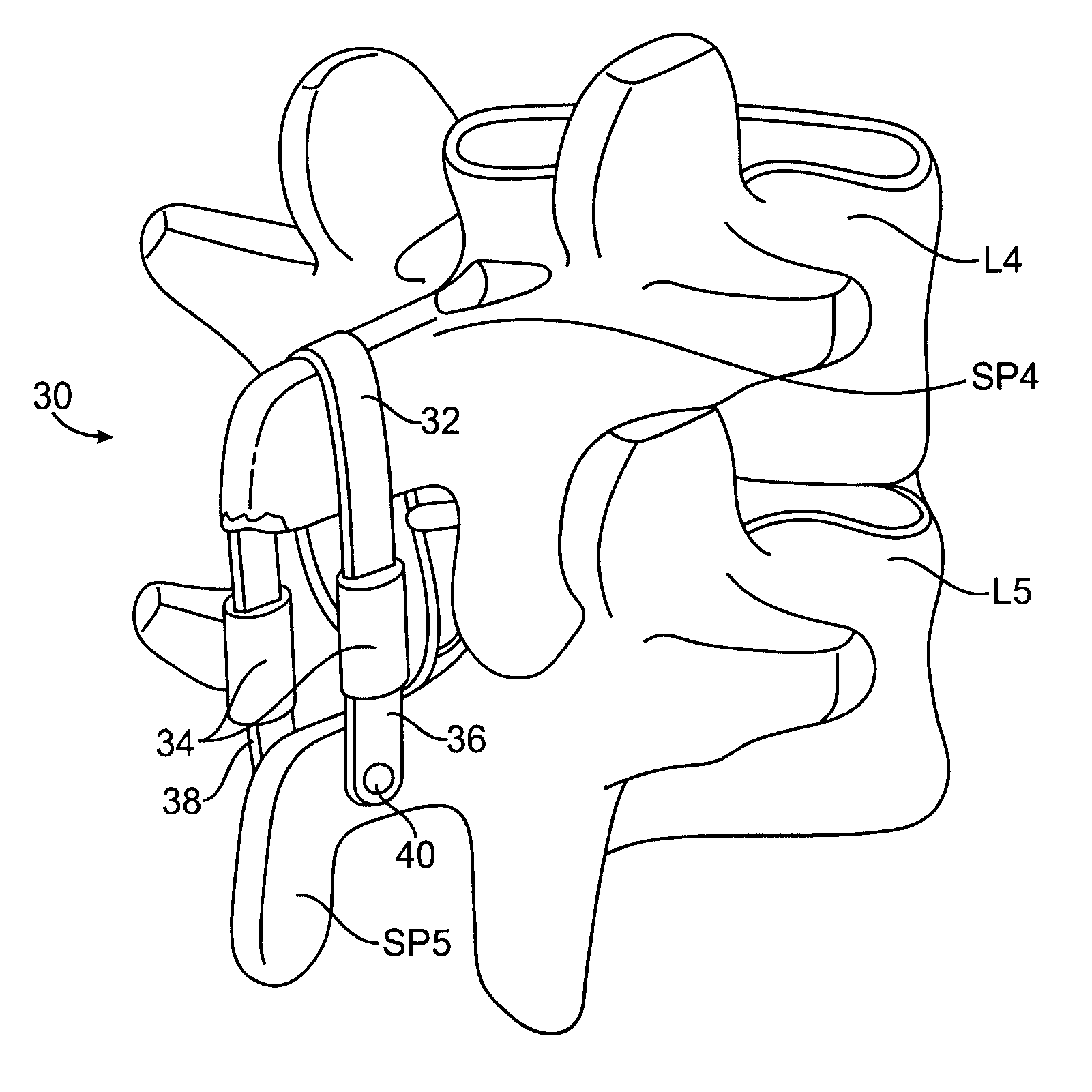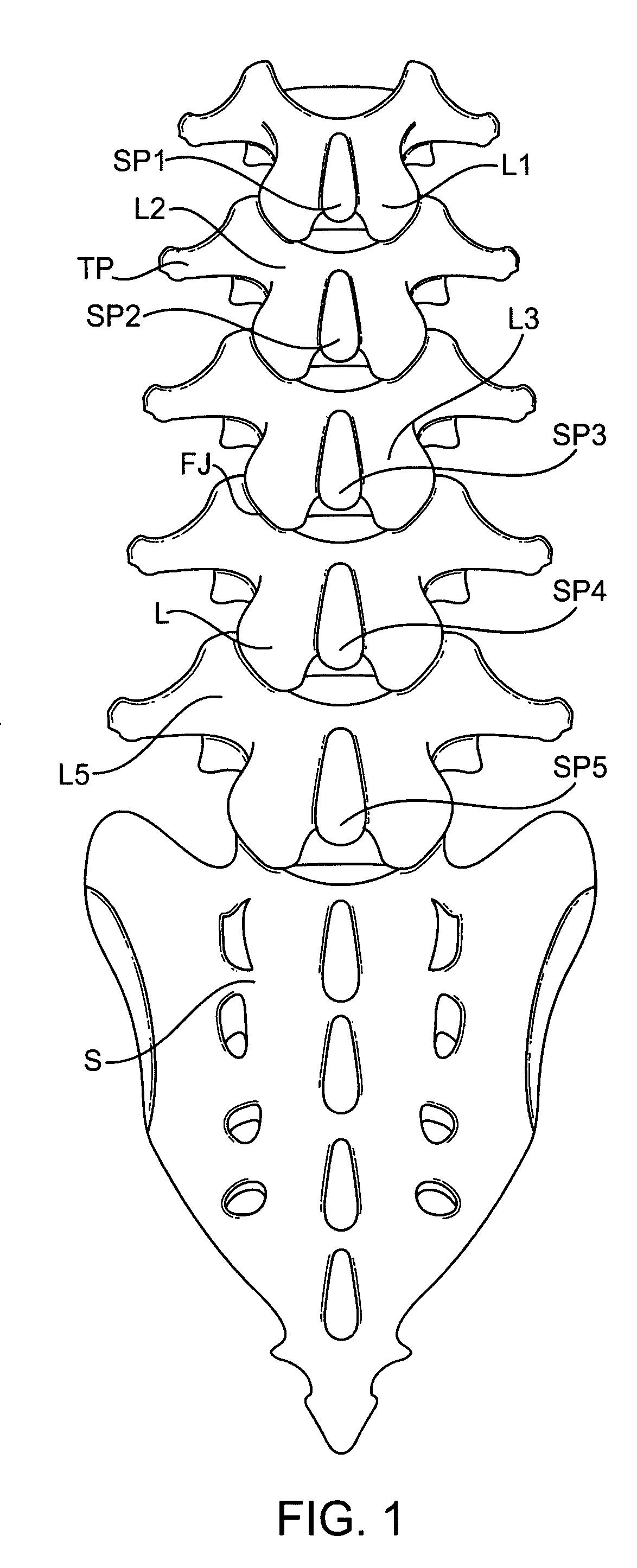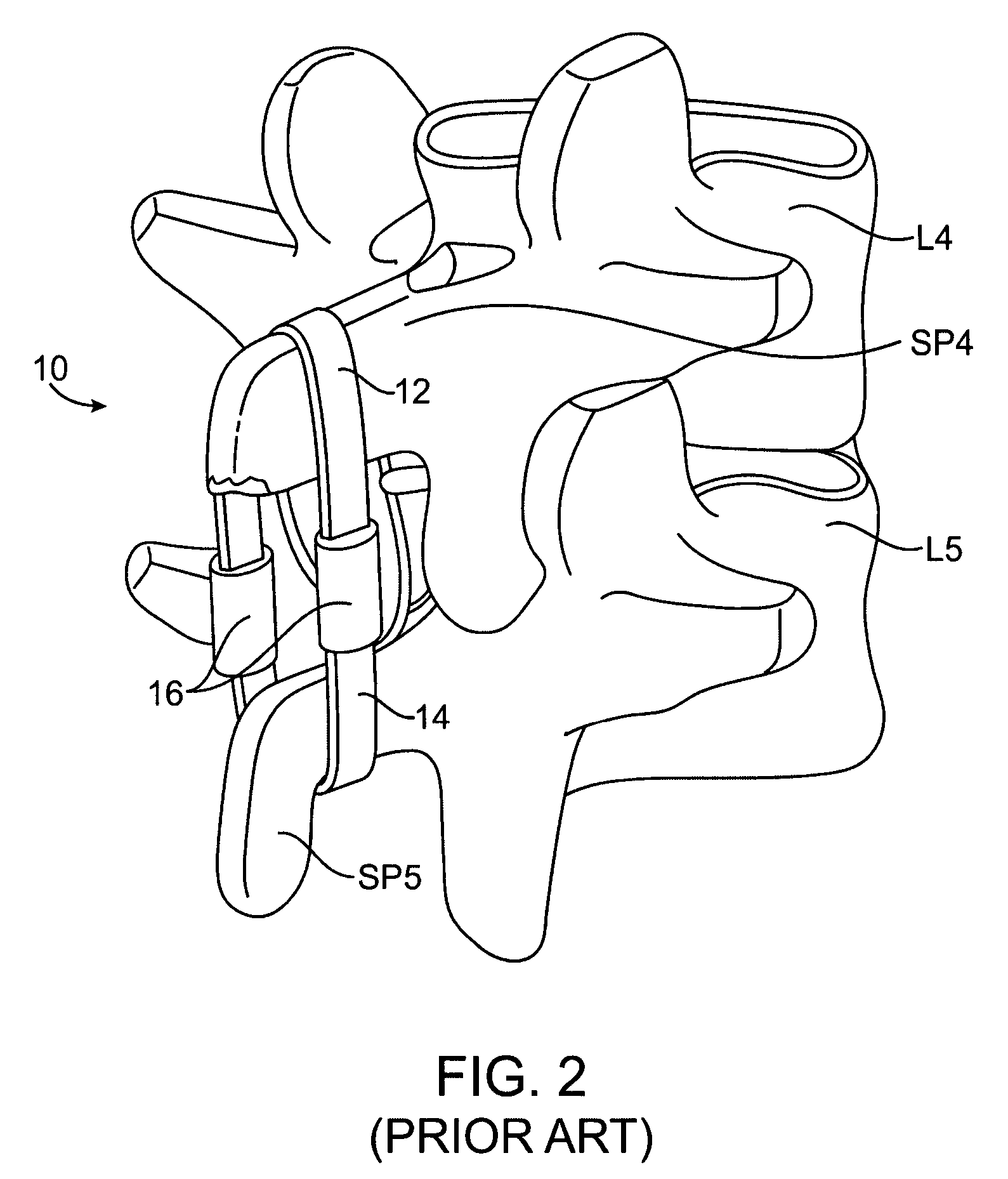Methods and systems for constraint of spinous processes with attachment
a technology of constraint and spinous process, applied in the field of medical methods and devices, can solve the problems of other embodiments having limited compliance or flexibility, and achieve the effect of little or no restriction or resistance to spine extension
- Summary
- Abstract
- Description
- Claims
- Application Information
AI Technical Summary
Benefits of technology
Problems solved by technology
Method used
Image
Examples
Embodiment Construction
[0030]Referring now to FIG. 3, a spinal implant 20 suitable for use in accordance with the methods of the present invention comprises an upper strap 22, a lower strap 24, and a pair of compliance members 26 joining the upper and lower straps. Typically, the upper and lower straps 22 and 24 will be non-distensible but will be joined to the compliance members 26 so that they can be expanded from a constricted configuration, as shown in broken line, when the patient's spine is in a neutral position between flexion and extension, to an expanded configuration (shown in full line) when the patient's spine is in flexion. The compliance members 26 will provide a force which acts against the extension of the spinous processes SP4 and SP5, as generally described in prior patent application U.S. 2005 / 0216017, which has been previously incorporated herein by reference. In contrast to the teachings of the '017 application, however, the lower strap 24 is non-fixedly attached to the spinous proces...
PUM
 Login to View More
Login to View More Abstract
Description
Claims
Application Information
 Login to View More
Login to View More - R&D
- Intellectual Property
- Life Sciences
- Materials
- Tech Scout
- Unparalleled Data Quality
- Higher Quality Content
- 60% Fewer Hallucinations
Browse by: Latest US Patents, China's latest patents, Technical Efficacy Thesaurus, Application Domain, Technology Topic, Popular Technical Reports.
© 2025 PatSnap. All rights reserved.Legal|Privacy policy|Modern Slavery Act Transparency Statement|Sitemap|About US| Contact US: help@patsnap.com



